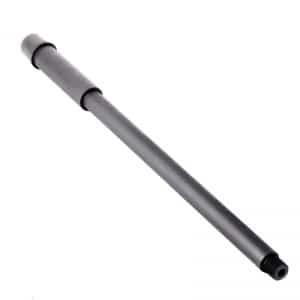Posted by denny mcdaniels on Jan 01, 2018 in Rifle Cartridge Reloading
 Developing a load for a 300 AAC Blackout. The rifle used has a 16 inch barrel with 1:8 twist. Using Frontier’s .308 diameter 155 grain flat base Spitzer plated bullet, 16 grains of Hodgdon CFE BLK powder, Remington 7-1/2 benchrest primers and once fired 300 Blackout brass. (Click here for a preview of all available 300 Blackout brass)
Developing a load for a 300 AAC Blackout. The rifle used has a 16 inch barrel with 1:8 twist. Using Frontier’s .308 diameter 155 grain flat base Spitzer plated bullet, 16 grains of Hodgdon CFE BLK powder, Remington 7-1/2 benchrest primers and once fired 300 Blackout brass. (Click here for a preview of all available 300 Blackout brass)
The Frontier Bullet Company is from South Africa, I been shooting the Range Master series, a CNC machined from brass alloy with high lead content. Unit cost is .123 cents each click here for additional info. Weight averages 154.8 grains, length average 1.65 inches. Group size averages 1 inch at 100 yards.
I started load development from hodgdonreloading.com where there is a listing for 150 grain bullets, I used for starting data (18.8 grains-1,180 fps-26,600 PSI) My rifle I need to set overall cartridge length shorter than specs I find on line so I decreased powder charge to allow for the bullet to be seated deeper. I learned from the Techs at Hodgdon that with the CFE BLK powder this strategy can be used with confidence, the new powder is a low-pressure type and forgiving.
I measured an average 2111 fps with a spread of 32 fps with the chronograph set 15 feet from the muzzle. Any closer and the instrument failed to register. The temperature was 15 degrees, partly cloudy day with no wind. I have no complaints with the progress I made so far, the load is clean and cycles the action flawlessly. So far been charging straight from powder measure to case, I suspect that I can tightened groups by trickling the powder charge to guaranty a more uniform load.
I recently worked up a load using Hodgdon H-110 powder, I wanted to try a popular chioce that I can use in the 300 Blackout and the 450 Bushmaster. I settled on a charge of 15.8 grains, using the Frontier 155 grain bullets mentioned earlier. The average velocity was measured at 1840 fps, this round cycled and shot satisfactory. Overall a pleasant round to plink with. The point of impact was noticeably different than the CFE charged loads, at 100 yards the impact was high left.
Denny McDaniels
